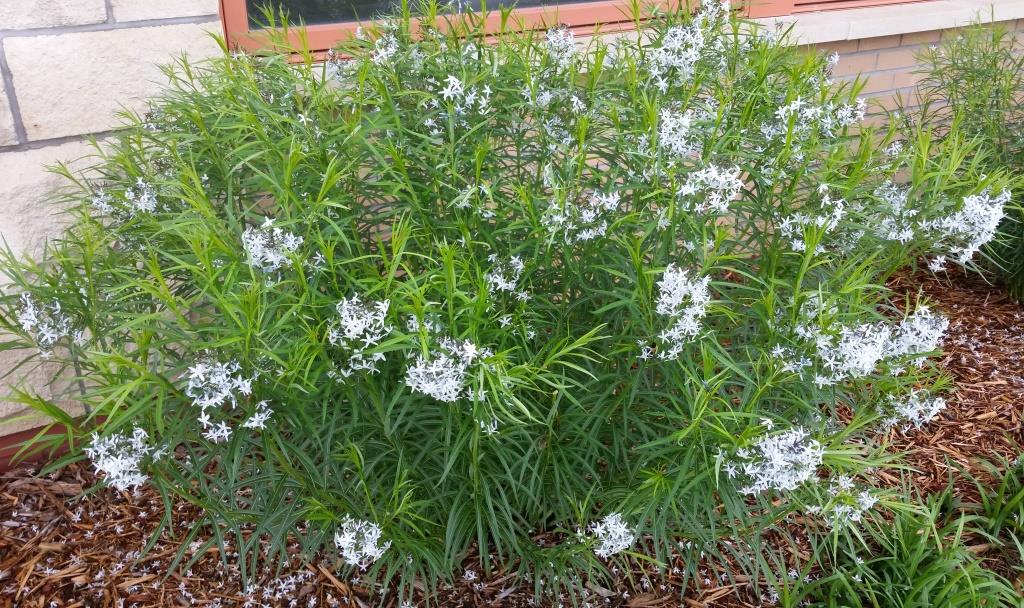Selecting perennials for the garden can be a difficult task given the number of species and the amazing number of cultivars per species. It would be easy to be a collector of certain species, there are over 1200 daylily varieties alone! In several species: echinacea, hosta, iris, peony, dahlia, and others; there may be over 200 cultivars in each.

I prefer to choose plants that work well together, with different species, colors, textures, heights, and moisture tolerances, to get the fullest effect from my garden. Today, let us discuss bluestar.

Bluestar is a native, drought tolerant perennial with a grassy-leaf texture. The fine foliage of bluestar makes it and outstanding mass plant for any garden. It can be planted in full sun or part shade and is tolerant of wet feet. Bluestar has milky sap and is a member of the dogbane family, which includes dogbanes and milkweed. It is not bothered by deer and is the host for the Eastern Coral Butterfly, which likes its milky sap. Bluestar grows 2 to 3 feet tall and wide.

There are 2 species of bluestar that we are concerned with in our area. Amsonia huibrichtii is Threadleaf Bluestar. It has fine, thin bladed leaves, blue flowers in spring, and excellent fall foliage. Both bluestars have yellow to orange fall color that is a highlight of the garden in autumn.

Amsonia tabernaemontana is Eastern Bluestar. The leaves are 1/2″ wide and the plant is a bit more upright than Threadleaf Bluestar. It also has blue spring flowers and great fall color. Both species spread by underground rhizomes, forming a large clump over time.
Try some bluestar in your garden for a pop of texture and fall color!



